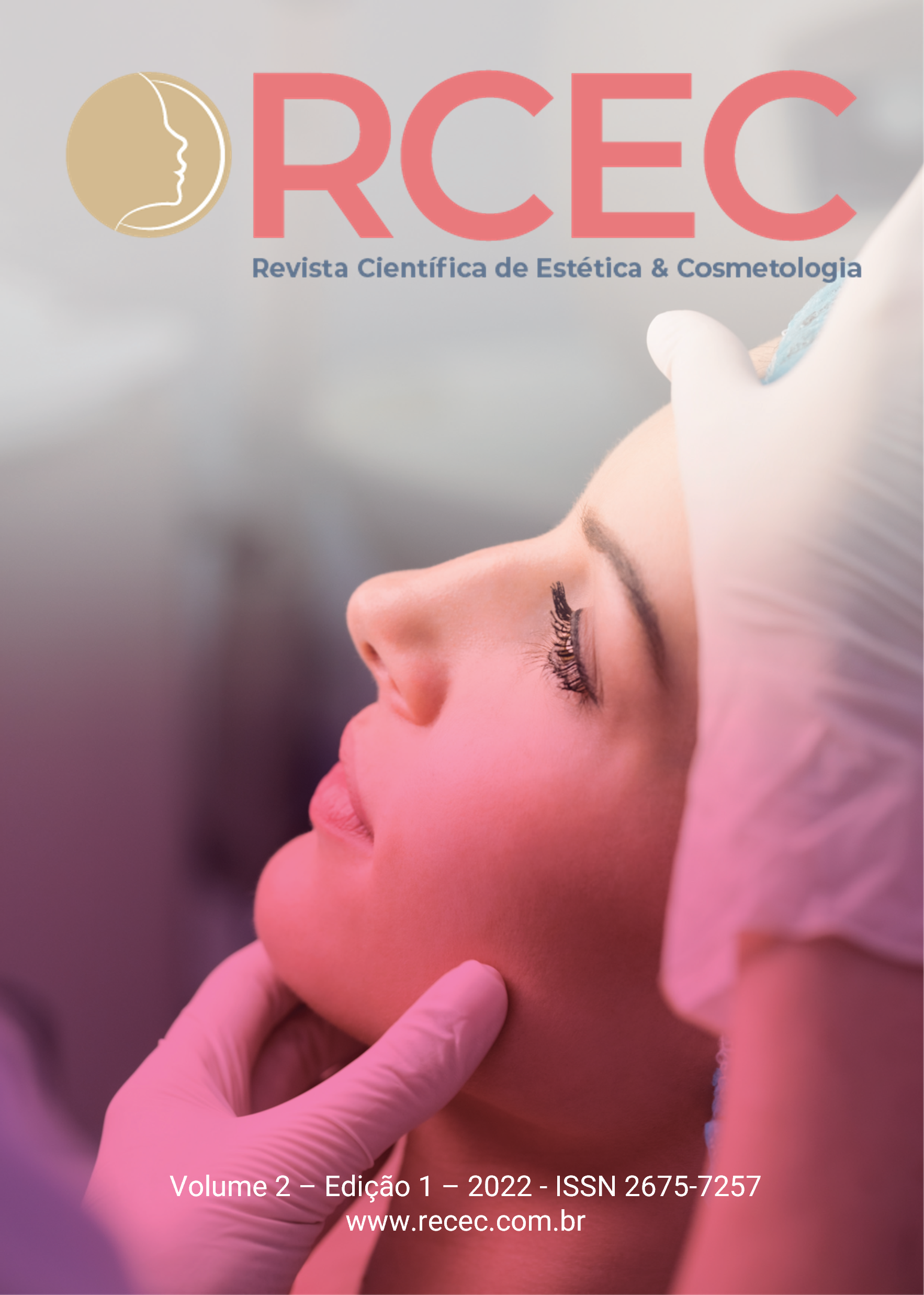Bioestimulador natural: plasma gel e suas densidades
Main Article Content
Abstract
Also known as platelet autogenous plasma, platelet-enriched plasma and other similar denominations, PRP is an autologous platelet concentrate obtained from centrifuging the patient's whole blood, where the potential effect of PRP occurs through the release of growth factors present in platelet alpha granules. Plasma gel has brought great benefits, especially when compared to traditional Biostimulators, as it is an autologous product, the chances of complications are practically nil, as well as its cost is very low, making it a treatment option for more patients.
With that, the universe of the natural biostimulator began, but other brands of incubators for plasma gel appeared and with that, we can observe that according to the size of the syringe, the time to obtain different densities changes, so we need a standard of time to achieve the ideal density.
The objective of this study was to standardize the incubation time according to the densities and syringes used. To carry out the study, 36 samples were used, containing 3.5 ml of blood, which were distributed in 12 syringes of different sizes and were exposed to the plasma gel incubator at different times. As a result, we observed a small gap between 1ml and 3ml syringe, when comparing with 3ml and 5ml syringe (small gap of 1 min again), but when comparing with 10ml syringe we observed a large gap between all.
The authors concluded that the use of the Plasma gel obtained by the study is a simple, safe and accessible procedure, and it is possible to obtain three different types of density from the same product.
Article Details

This work is licensed under a Creative Commons Attribution 4.0 International License.
Copyright Statement - Policy Proposal for Open Access Journals
Authors who publish in the Scientific Journal of Aesthetics & Cosmetology agree to the following terms: 1 - Authors retain the copyright and grant the journal the right to first publication, with the work simultaneously licensed under the Creative Commons Attribution License allowing the sharing of the work with acknowledgment of the authorship of the work and initial publication in this magazine. 2 - Authors are authorized to assume additional contracts separately, for non-exclusive distribution of the version of the work published in this journal (eg, publishing in institutional repository or as a book chapter), with acknowledgment of authorship and initial publication in this journal. 3 - Authors are allowed and encouraged to publish and distribute their work online (eg in institutional repositories or on their personal page) at any point before or during the editorial process, as this can generate productive changes, as well as increase the impact and citation of published work.
This is an open access article under the CC-BY license
References
MARX, R.E.; CARLSON, E.R.; EICHSTAEDT, R.M.; SCHIMMELE, S.R.; STRAUSS, J. E.; GEORGEFF, K. R. Platelet-rich plasma: Growth factor enhancement for bone grafts. Oral Surg Oral Med Oral Pathol Oral Radiol Endod. 1998; 85(6): 638-46.
SCLAFANI, A.P. Platelet-rich fibrin matrix for improvement of deep nasolabial folds. J Cosmet. Dermatol. 2010; p. 66-71.
SAMMARTINO, G.; TIA, M.; GENTILE, E.; MARENZI, G; CLAUDIO, P.P. Platelet-rich plasma and resorbable membrane for prevention of periodontal defects after deeply impacted lower third molar extraction. J Oral Maxillofac Surg. 2009; 67(11): 2369-273.
VENDRAMIN, F.S., FRANCO, D., FRANCO, T.R. Methods to obtain autologous platelet-rich plasma gel. Rev. Bras. Cir. Plast. 2009; 24(2): 212-8.
FAGIEN, S., BERTUCCI, V., GROTE, E., JAY, H. Rheologic and Physicochemical Properties Used to Differentiate Injectable Hyaluronic Acid Filler Products. Plastic and Reconstructive Surgery. 2019; 143(4): 707-720.
ELGHBLAWI, E. Platelet-rich plasma, the ultimate secret for youthful skin elixir and hair growth triggering. J. Cosmet. Dermatol. 2018; 17(3):423-430.
FUJIOKA-KOBAYASHI, M., et al. Optimized platelet-rich fibrin with the low-speed concept: growth factor release, biocompatibility, and cellular response. J. Periodontol. 2017; 88(1): 112-121.


